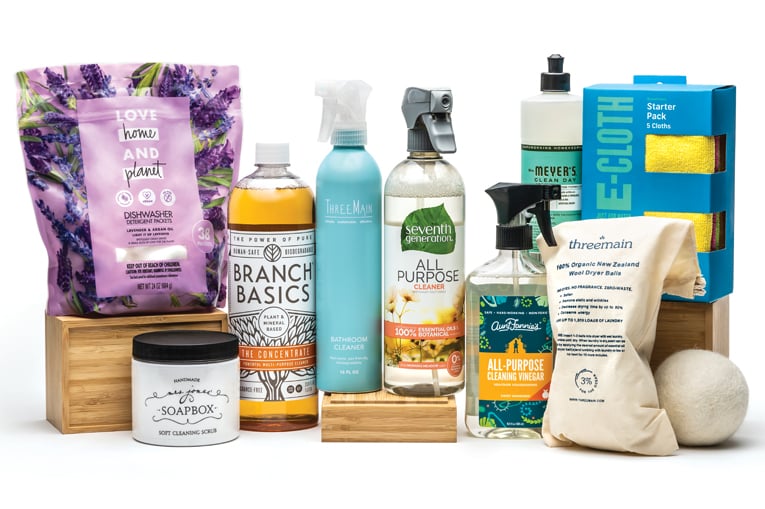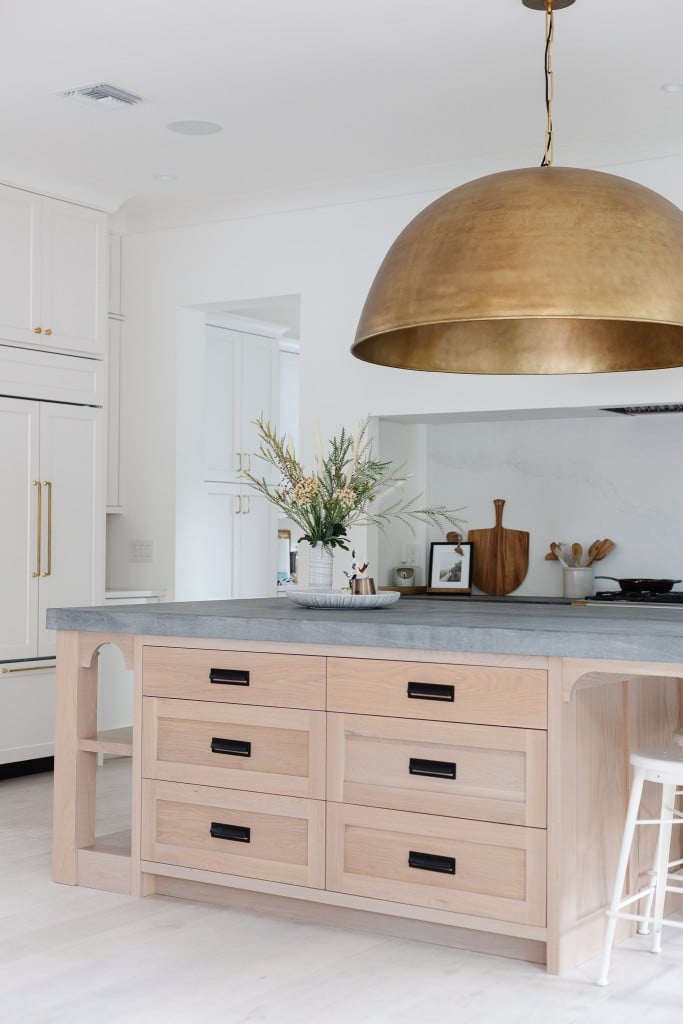A Greener Way to Clean Your Home
Tidy up your home as well as your eco footprint with these seven tips in mind.
(Love Home and Planet Lavender & Argan Oil Dishwasher Detergent Packets, $9.99, amazon.com; Mrs. Jones’ Soapbox Soft Cleaning Scrub, $9.99, mrsjonessoapbox.com; Branch Basics The Concentrate Multi-Purpose Cleaner, $49, branchbasics.com; Three Main Bathroom Cleaner, $9.99, threemain.com; Seventh Generation All Purpose Cleaner, $3.99, target.com; Aunt Fannie’s All-Purpose Cleaning Vinegar, $6.99, auntfannies.com; Mrs. Meyer’s Basil Dish Soap, $3.99, mrsmeyers.com; Three Main 100 percent Organic New Zealand Wool Dryer Balls, $19.99, threemain.com; E-Cloth Starter 5-Pack, $24.99, e-cloth.com)
A little over a year ago, cleaning products were the hottest items in town. Because of the spread of COVID-19, people were sanitizing everything from their groceries to their mail, and it was commonplace to see the cleaning aisle barren, with customers scrambling to grab whatever was available.
Now that things are returning to a sense of normalcy, you’re likely to have more choice when it comes to household supplies. That’s why there’s no better time to revamp your approach and embrace a more eco-conscious, sustainable cleaning mentality. Don’t know where to start? Here are seven simple tweaks to begin going greener.
Simplify
Fact: You probably have more cleaning products than you actually need. “The easiest and quickest thing to do is to eliminate as many products from your house as possible,” explains Jamie Jones, founder of local brand, Mrs. Jones’ Soapbox. “Most things in our home can be cleaned with just soap and water, but companies like Clorox are in the business of making money, so they tell us we need a different product for each room and surface.” A good starting point is to toss anything toxic and whittle down from there.
Look to the Label
Similar to beauty products and food, it can be a daunting task to know what to look for on a label—and just because something says it’s natural or green doesn’t necessarily mean it is. “Avoid bleach, phosphates, chlorine and artificial fragrances,” says Angelica Cabrales, owner of Living to the Greenest, an Orlando-based cleaning company. “Instead look for concentrated formulas you can easily refill, ones made with essential oils, or products you can use on multiple surfaces,” she says. Proof that you don’t need a lot? Cabrales’ entire business relies on only four products.
Trust Your Senses
Anything that makes your eyes water, your skin peel or has too strong of a smell needs to go. “It’s harder to judge based on only ingredients because even the ‘natural’ products list ingredients most of us have never heard of,” Jones explains. So if your gut is telling you something seems a little harsh, it probably is.
Keep Packaging in Mind
What’s on the outside is just as important as what’s on the inside. Cabrales suggests opting for items made from recyclable or biodegradable materials. Another option? Anything refillable. That way, once you buy the initial item, all you need going forward are refill packs that create less waste.
Consider Pantry Items
Sometimes all you need for that fresh clean look and smell is a little baking soda or vinegar. Baking soda can be used in a number of ways (from removing the most caked-on microwave messes to cleaning crayon scribblings off walls) while vinegar’s acetic acid naturally disinfects and helps dissolve mineral deposits, dirt, grease and grime. If you don’t feel like DIY-ing it, eco-friendly brands such as Aunt Fannie’s take the guesswork out of it.
Tidy Up Incrementally
It’s easier said than done, but you’ll save yourself a lot of time and effort if you don’t let a mess fester. “Removing dust, cleaning up sticky messes and vacuuming regularly are all easy and effective ways to keep your home clean,” says Jones. While seemingly basic, cleaning as you go works—and remember, try not to stress about germs and keeping things super sanitized 24/7. “Places like hospitals need to have a sterile environment, so the ingredients and products matter a lot, but you really don’t need that level of concern for your home,” she adds. “Think more about the process of cleaning rather than the right products.”
Rethink Your Relationship with Paper
This is may be the trickiest thing when it comes to a more sustainable cleaning routine, but trust us, you can cut back on your paper towel habit. “A good starting point would be to use cleaning cloths, like E-Cloths, when doing more deep cleaning and only using paper towels for spot cleaning or convenience throughout the day,” advises Cabrales. “However, once you start using premium cloths and realize how easily they clean, you may never go back to paper towels.” Jones adds that flour sack towels are also a good alternative (they’re inexpensive and have a similar thickness).




